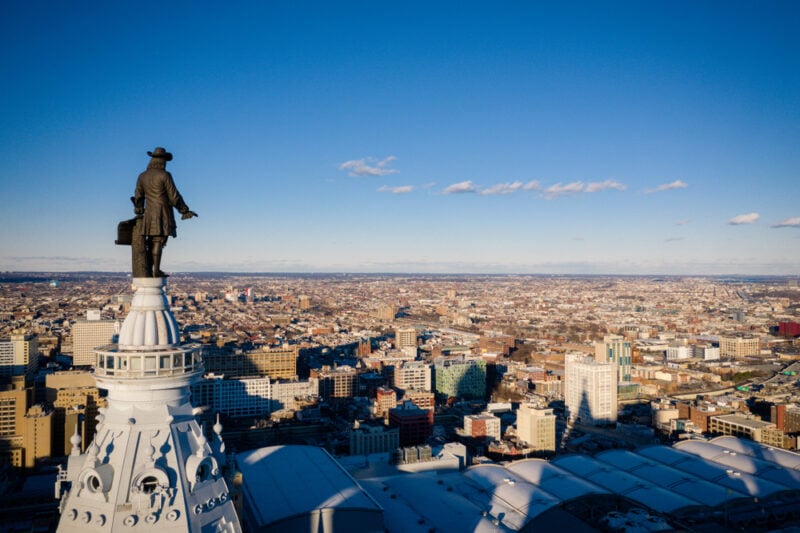The 30 Best Places to Live in Illinois: Top Cities and Towns
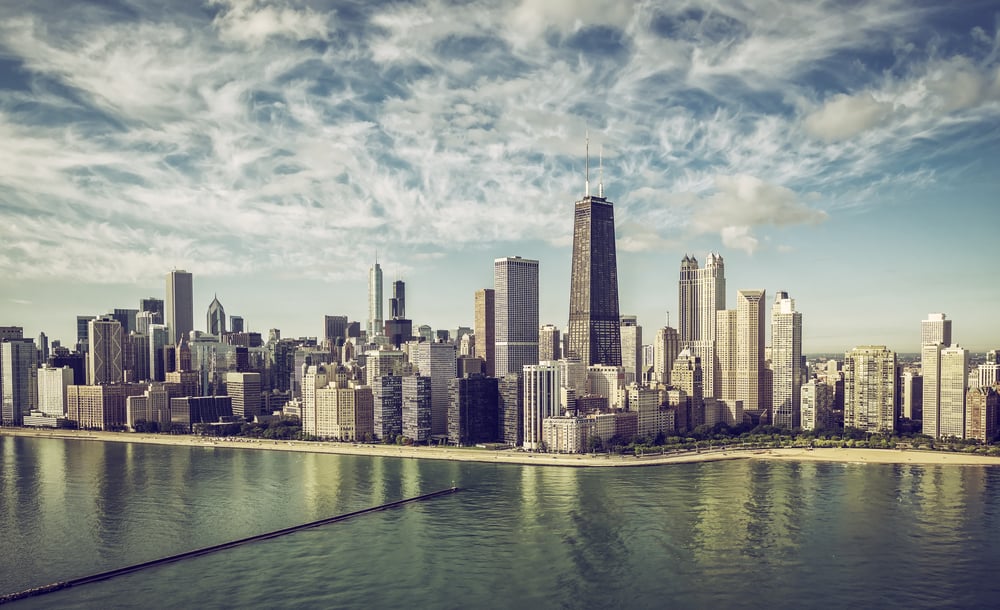
Illinois offers residents a diverse range of living environments, from bustling metropolitan areas to charming suburban communities and peaceful small towns.
The Prairie State combines urban opportunities with affordable living costs, quality educational institutions, and access to cultural amenities that appeal to families, young professionals, and retirees alike.
Choosing the right place to live in Illinois depends on individual priorities such as job market strength, school quality, housing costs, and lifestyle preferences.
The state’s communities range from Chicago’s vibrant neighborhoods to established suburbs like Naperville and Evanston, each offering distinct advantages for different stages of life.
Understanding the characteristics of Illinois’s top cities helps potential residents make informed decisions about where to establish their homes and build their futures.
Here are the 30 best places to live in Illinois:
30. Morton Grove
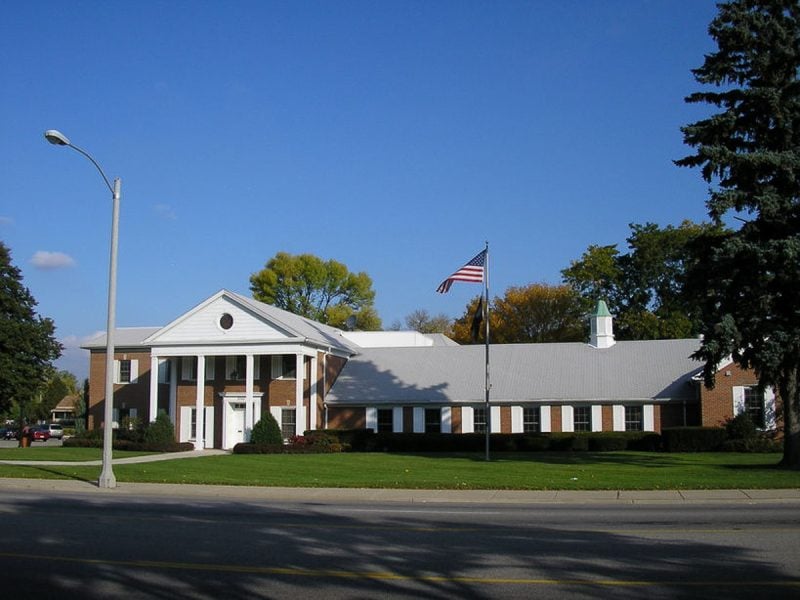
Morton Grove stands as a charming Chicago suburb with a population of approximately 25,000 residents. Located in Cook County, this community offers a dense suburban atmosphere where most residents own their homes.
The city provides excellent family-friendly amenities including numerous restaurants, coffee shops, and parks. Its diverse community creates a welcoming environment for newcomers and long-term residents alike.
Morton Grove experiences a four-season climate with nearby beach access for recreational activities. The median home price sits around $332,100, which aligns with similar-sized communities in the region.
Residents benefit from the suburb’s proximity to Chicago while enjoying a quieter residential setting. The area features well-established neighborhoods that cater to various lifestyle preferences.
The community’s combination of accessibility, amenities, and suburban charm makes it an attractive option for those seeking quality living in the Chicago metropolitan area.
29. Downers Grove
Downers Grove is a Chicago suburb located in DuPage County with a population of 49,867. The community offers residents an urban suburban mix with most people owning their homes.
The town features numerous restaurants, coffee shops, and parks throughout the area. Downtown Downers Grove serves as a vibrant hub with historic homes and easy access to local shops and dining options.
Denburn Woods stands out as an upscale neighborhood known for large lots and custom homes. The area attracts residents seeking higher-end housing options.
Downers Grove earned recognition by making Livability’s list of 100 Best Places to Live in the United States. The community ranks as one of the top places to live in Illinois based on various quality of life factors.
28. Lisle

Lisle stands out as one of Illinois’ premier suburban communities in DuPage County. The village earned recognition from Money Magazine as one of America’s Top 20 “Best Places to Live.”
Young professionals particularly favor Lisle, ranking it 6th out of 362 Illinois suburbs. The community attracts educated and skilled residents who value quality amenities.
Lisle’s public school system receives high marks, placing 35th among 541 Illinois districts. Families appreciate the educational opportunities available throughout the community.
The village offers excellent amenities, reasonable housing costs, and quality healthcare options. Residents enjoy a vibrant community atmosphere with numerous recreational facilities.
Housing quality varies significantly across different Lisle neighborhoods. The real estate market reflects strong demand from buyers seeking suburban living with urban accessibility.
27. South Barrington
South Barrington stands as one of Illinois’ most desirable communities. This Cook County village consistently ranks among the top places to live in the state.
The community offers excellent public schools that attract families seeking quality education. Low crime rates contribute to the area’s reputation as a safe place to raise children.
South Barrington maintains a suburban atmosphere while providing access to Chicago amenities. Residents enjoy recreational areas and well-maintained neighborhoods throughout the village.
Housing prices exceed the Illinois average, reflecting the area’s desirability. The higher cost of living corresponds with above-average median incomes in the community.
The village combines rural tranquility with urban conveniences. Its location near Chicago provides employment opportunities while maintaining a peaceful residential environment.
South Barrington appeals to professionals and families who value safety, education, and quality of life.
26. Hoffman Estates
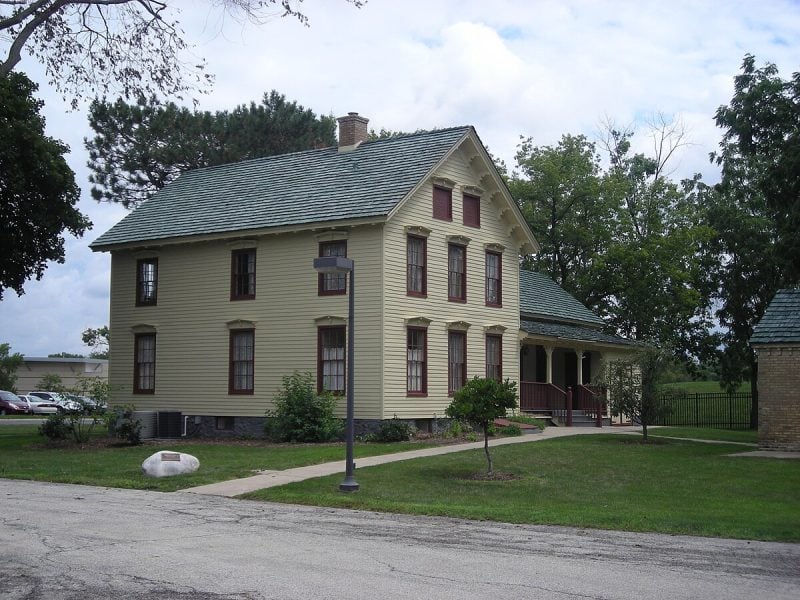
Hoffman Estates ranks among Illinois’s top suburban communities with a population of 51,186 residents. The city offers a dense suburban atmosphere where most residents own their homes.
Located in Cook County, Hoffman Estates provides excellent employment opportunities and maintains strong educational systems. The job market features diverse positions across multiple industries.
Several distinct neighborhoods define the community. Haverford Place features upscale homes with well-maintained properties. Westbury offers diverse housing styles alongside quality schools.
Hunters Ridge provides convenient townhome living near shopping and dining establishments. Highland Crossing represents newer development with modern amenities.
The city maintains low crime rates and high quality of life standards. Residents enjoy numerous restaurants, coffee shops, and parks throughout the area.
Housing prices align closely with Illinois state averages at approximately $242,002. The community combines suburban comfort with urban accessibility.
25. Barrington
Barrington stands as an affluent village in Cook County’s northeast corner with a population of 11,049. The community consistently ranks among Illinois’s top places to live.
This Chicago suburb offers residents a dense suburban atmosphere where most people own their homes. The village features numerous coffee shops and parks throughout the area.
Barrington scores well across multiple quality-of-life factors including employment opportunities and recreational activities. The cost of living reflects its desirable status as an upscale community.
The housing market varies significantly across different neighborhoods within Barrington. Premium areas command higher home values based on market demand and local amenities.
Residents enjoy access to various community features and maintain proximity to Chicago’s employment centers. The village attracts families and professionals seeking suburban living with urban accessibility.
24. Libertyville
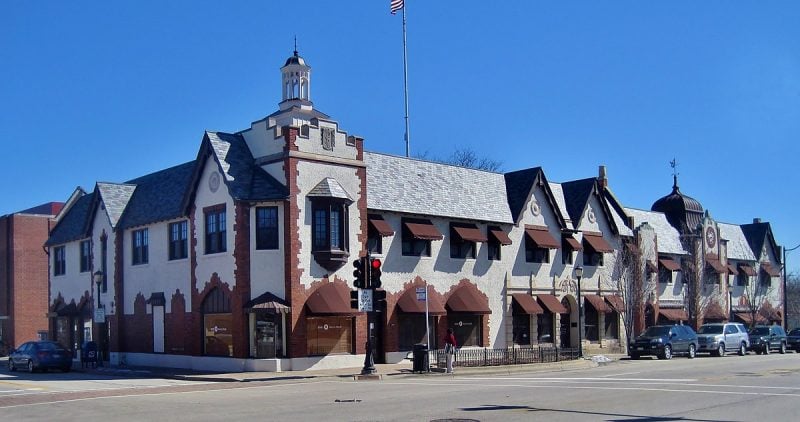
Libertyville stands out as one of Illinois’ premier suburban communities. This Lake County city houses approximately 20,800 residents and consistently ranks among the state’s best places to live.
The community earned national recognition in 2007 when it was named the 52nd best place to live in the United States. Safety remains a top priority, with Libertyville ranking among the top 100 safest cities in America.
Residents enjoy a dense suburban atmosphere where most people own their homes. The city offers numerous restaurants and parks that enhance daily life.
Libertyville’s proximity to Chicago provides excellent commuting options for professionals. The Des Plaines River Trail offers recreational opportunities and connects residents to regional attractions.
The community maintains low unemployment rates and strong educational systems. These factors contribute to Libertyville’s reputation as a highly desirable place to establish roots in northern Illinois.
23. Orland Park
Orland Park stands as one of Illinois’ premier suburban communities. This Cook County suburb houses 57,961 residents and consistently ranks among the state’s best places to live.
The city offers excellent safety ratings and high quality of life standards. Families appreciate the strong public school system and abundant recreational opportunities throughout the area.
Located in Chicago’s southwest suburbs, Orland Park provides convenient access to downtown Chicago. Residents enjoy the benefits of big city amenities while maintaining a quieter suburban lifestyle.
The community features diverse neighborhoods including the historic Old Orland district and upscale Brook Hills area. Eagle Ridge offers newer homes within a golf course community setting.
Downtown Orland Park provides shopping, dining, and entertainment options. The area includes numerous restaurants, coffee shops, and well-maintained parks for outdoor activities.
Most residents own their homes in this sparse suburban environment. The thriving real estate market reflects the area’s continued desirability among homebuyers.
22. Skokie
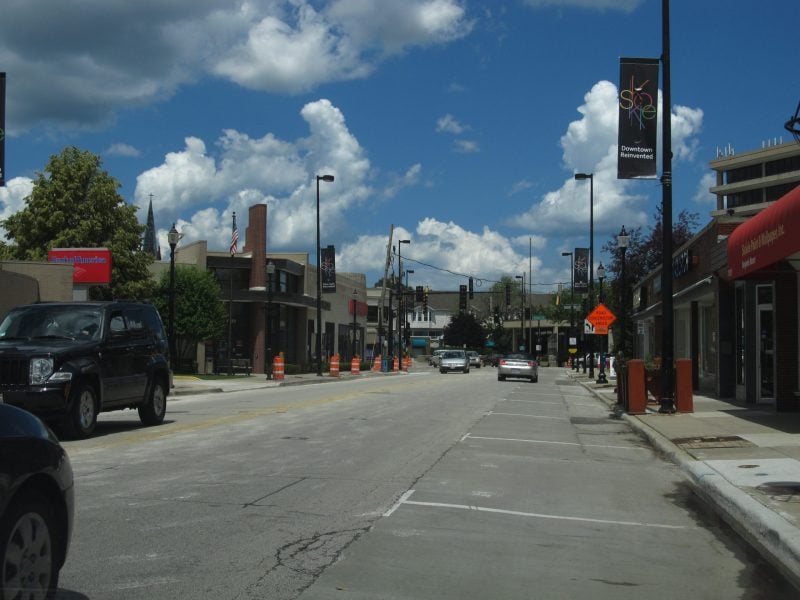
Skokie ranks as the 9th best place to live in Illinois and holds the 230th position nationally. The city earned a score of 5.8 out of 10 in comprehensive livability rankings.
This diverse suburb of approximately 62,000 residents offers excellent public schools and maintains low crime rates. The community provides a welcoming small-town atmosphere while remaining close to Chicago.
Skokie ranks 15th among Illinois’s most diverse suburbs. Young professionals particularly favor this area, with the city placing 25th statewide for this demographic.
The Illinois Science + Technology Park attracts numerous tech and biotech companies to the region. This creates strong job opportunities for residents across various industries.
Cultural attractions include the Illinois Holocaust Museum and Education Center. The Skokie Northshore Sculpture Park features over 60 unique sculptures throughout its grounds.
Housing quality varies significantly across different neighborhoods within Skokie. The city offers numerous parks and recreational facilities for residents.
21. Lake Forest
Lake Forest stands as one of Illinois’ most desirable suburban communities, located 30 miles north of Chicago. The city consistently ranks among the best places to live in the state.
With a population of 19,190, Lake Forest offers residents a sparse suburban atmosphere. Most residents own their homes in this affluent community with a median household income of $228,120.
The city provides excellent access to outdoor recreation with beautiful parks, trails, and beaches along Lake Michigan’s shoreline. Residents enjoy numerous restaurants, coffee shops, and shopping opportunities.
Lake Forest ranks 179th among America’s best suburbs and 205th for public schools nationally. Home prices significantly exceed Illinois’ state average of $242,002, reflecting the area’s desirability and quality of life.
20. Highland Park
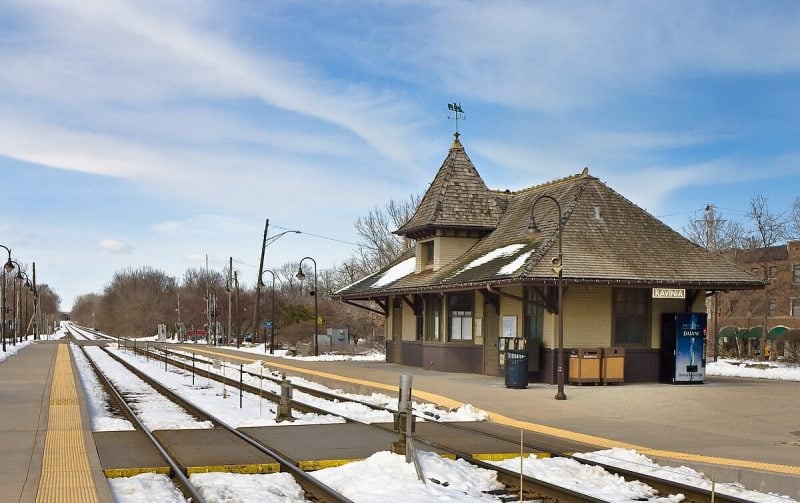
Highland Park stands as one of Illinois’ premier suburbs with a population of 30,229 residents. The city ranks 150th out of 6,797 places for best public schools in America.
Located in Lake County near Chicago, Highland Park offers a dense suburban atmosphere. Most residents own their homes in this affluent community.
Safety ranks as a major advantage, with Highland Park placing 12th among Illinois’ safest cities. The crime rate sits 66% lower than the national average.
The city features abundant restaurants, coffee shops, and parks for residents. Highland Park provides scenic Lake Michigan water views that enhance its appeal.
Cultural attractions include the famous Ravinia Festival, America’s oldest outdoor music festival. The downtown shopping district adds to the community’s charm and convenience.
19. Gurnee
Gurnee is a village in Lake County, Illinois, situated north of Chicago near Lake Michigan’s western shores. The community has earned recognition as one of the top places to live in the United States.
The village received an overall quality of life score of 7.2 out of 10 according to ranking websites. This rating reflects its combination of amenities and livability factors.
Gurnee is home to Six Flags Great America theme park, providing recreational opportunities for residents and visitors. The location offers access to beaches along the lakefront during summer months.
The community features varying neighborhood quality based on home values and market desirability. Crime rates tend to be lower in many areas throughout the village.
Residents benefit from Gurnee’s proximity to Chicago while enjoying a smaller community atmosphere. The village continues to experience steady growth as more people discover its advantages.
18. Elmhurst

Elmhurst ranks as one of Illinois’ premier suburban communities, located just 16 miles west of Chicago. The city earned 7th place statewide for quality of life according to recent rankings.
This DuPage County suburb attracts young professionals and families with its dense suburban atmosphere. Most residents own their homes in this community of approximately 46,000 people.
The city offers excellent walkability with numerous restaurants, coffee shops, and parks throughout the area. Elmhurst’s education system stands out with top-rated public schools and access to higher learning institutions.
Safety remains a key advantage, as the community maintains low crime rates. The poverty rate sits at just 3.4%, well below national averages.
Housing costs reflect the area’s desirability, with median home prices reaching $579,333 in early 2025. The typical household earns $123,869 annually, significantly above the national median.
Healthcare facilities and diverse housing options add to Elmhurst’s appeal for residents seeking suburban living with urban convenience.
17. Glen Ellyn
Glen Ellyn sits in DuPage County as a desirable Chicago suburb with 28,270 residents. The village offers an urban-suburban mix that attracts families and young professionals.
Housing costs run significantly higher than state averages. The median home price reaches $467,600, compared to Illinois’s average of $242,002.
The downtown area features local shops and restaurants. Residents enjoy access to parks, nature preserves, and recreational facilities including a golf course.
Glen Ellyn earned recognition as the “Village of Volunteers” for its active community involvement. The area hosts regular public events that bring neighbors together.
Schools receive strong ratings, making the village particularly appealing to families with children. The community maintains low crime rates and a reputation for safety.
Transportation options exist but represent one of the area’s weaker points. Most residents rely on personal vehicles for daily commuting and errands.
16. Oak Brook
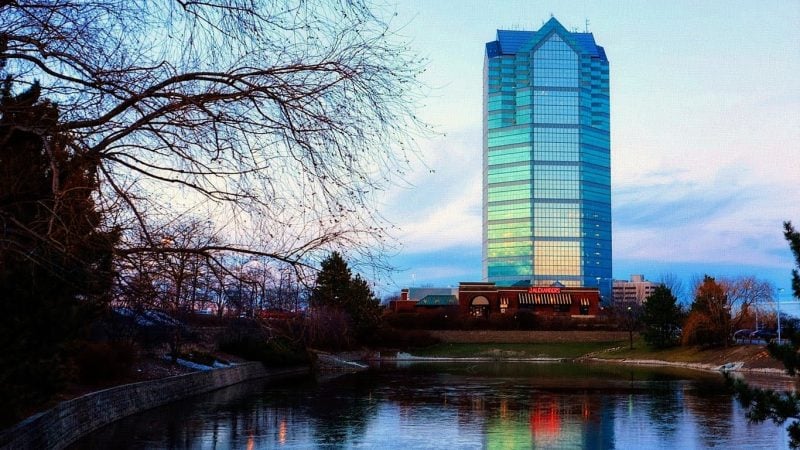
Oak Brook stands as one of Illinois’ most desirable suburban communities. This DuPage County village houses approximately 8,000 residents within an hour of Chicago.
The community attracts affluent families seeking quality living. Home prices exceed the state average of $242,000, reflecting the area’s desirability and market demand.
Oak Brook maintains excellent public schools with an average rating of 8. The low crime rate makes it particularly suitable for families considering relocation.
Residents enjoy a sparse suburban atmosphere with abundant dining and recreational options. The area features numerous restaurants, coffee shops, and parks throughout the community.
The village offers convenient access to employment opportunities. Commute times remain reasonable for those working in nearby areas or Chicago.
Oak Brook combines residential appeal with corporate presence. Major companies including Ace Hardware have established headquarters in the area, contributing to local economic stability.
15. Arlington Heights
Arlington Heights earned the top ranking among Illinois communities in U.S. News & World Report’s 2025-26 Best Places to Live list. The northwest Chicago suburb placed 56th nationally out of thousands of communities.
The city maintains a population of approximately 75,000 residents. Its poverty rate of 4.2% sits well below the national average, indicating strong economic stability.
Arlington Heights School District 25 ranks among Illinois’ top-performing districts. The system maintains a favorable 15-to-1 student-teacher ratio and several schools receive A+ ratings.
Housing costs exceed the state average of $242,002, reflecting the area’s desirability. The downtown area continues developing with new projects and amenities.
Residents benefit from proximity to Chicago while enjoying suburban amenities. The community offers family-friendly events and well-maintained neighborhoods throughout the city.
14. Wheaton
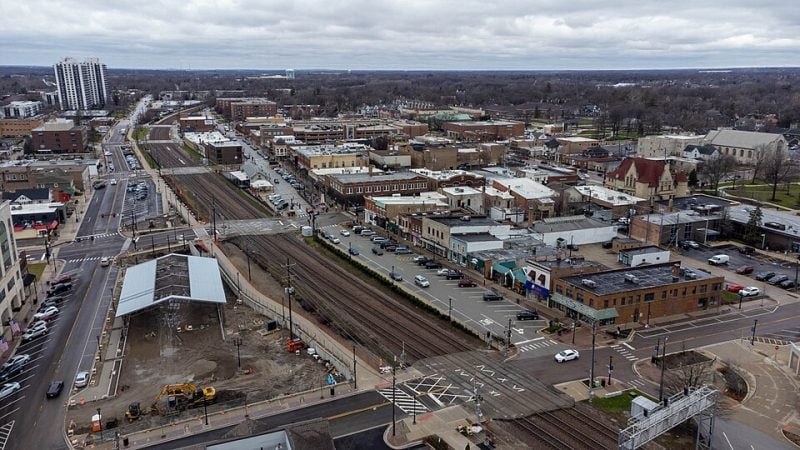
Wheaton stands out as one of Illinois’ premier suburbs, located just 25 miles west of Chicago in DuPage County. This charming city of approximately 53,000 residents offers an ideal blend of small-town atmosphere and urban convenience.
The community boasts exceptional educational opportunities through Community Unit School District 200, which has earned statewide recognition. Families particularly appreciate the award-winning public school system and highly-rated public library.
Wheaton’s economic advantages are notable, with a median household income of $105,764 and a poverty rate of just 5.7%. The city maintains a dense suburban feel where most residents own their homes.
Location proves to be a major asset, with easy access to major highways and public transit connecting residents to downtown Chicago. The area features numerous restaurants, coffee shops, and parks that enhance quality of life.
Money magazine has recognized Wheaton as the best place to live in Illinois, highlighting its combination of livability, amenities, and proximity to Chicago.
13. Naperville Downtown
Naperville’s downtown district serves as the vibrant heart of this DuPage County city. The bustling downtown area offers residents walkable access to numerous restaurants, coffee shops, and local businesses.
The downtown core provides a dense suburban atmosphere while maintaining small-town charm. Residents can easily access parks and recreational facilities within walking distance of the central business district.
Living in downtown Naperville puts residents close to the city’s cultural attractions and community events. The area attracts families and professionals who value proximity to amenities and services.
Downtown Naperville offers convenient access to public transportation options for commuting to Chicago. The central location provides easy connectivity to other parts of the metropolitan area.
The neighborhood features a mix of housing options, from condominiums to townhomes. Residents benefit from the area’s low crime rates and well-maintained public spaces that contribute to the high quality of life.
12. Decatur
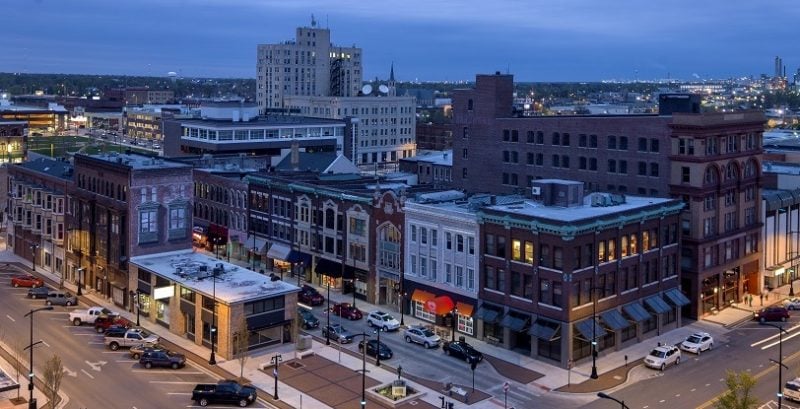
Decatur offers residents a dense suburban atmosphere in central Illinois. The city has a population of approximately 70,000 people and provides affordable living options compared to larger metropolitan areas.
Most residents own their homes in this Macon County city. The community features numerous parks and recreational facilities, including attractions like Scovill Zoo and Nelson Park for outdoor activities.
Several neighborhoods stand out for different reasons. The West End showcases historic homes with architectural character. South Shores provides lakefront properties along Lake Decatur for water enthusiasts.
Downtown Decatur has ongoing revitalization efforts for those preferring urban environments. The nearby village of Forsyth offers excellent school systems for families with children.
The city attracts diverse residents including families, young professionals, and retirees. Political views tend to be moderate across the community, creating a balanced social environment.
11. Bloomington
Bloomington ranks as one of Illinois’ premier places to live with a population of 78,703 residents. The city earned recognition as the #7 best place to live in Illinois according to U.S. News rankings.
Located in McLean County, Bloomington offers residents a dense suburban atmosphere where most people own their homes. The city features numerous parks and green spaces throughout the community.
Forbes ranked Bloomington #1 in Illinois and #28 nationally for “The Best Small Places for Business and Careers.” This recognition highlights the city’s strong job market and economic opportunities.
The area boasts low crime rates and excellent educational opportunities. CNN Money has previously recognized Bloomington as a top-ranked small city for quality of life.
Bloomington provides diverse neighborhood options including the historic Founders Grove district and the revitalized downtown area with modern lofts and apartments.
10. Normal
Normal sits in McLean County in central Illinois, just north of Bloomington. The city forms part of the combined metropolitan area often called “Blo-No.”
Illinois State University calls Normal home, bringing a vibrant college town atmosphere. The university contributes significantly to the local economy and cultural life.
The city maintains relatively affordable housing costs compared to Chicago suburbs. Residents benefit from lower living expenses while accessing quality amenities.
Normal offers solid employment opportunities, particularly in education and government sectors. The unemployment rate remains consistently below state averages.
Public transportation connects Normal to surrounding areas through Connect Transit. The system provides bus routes throughout the twin cities region.
The downtown area features local shops, restaurants, and entertainment venues. Constitution Trail offers walking and biking paths for outdoor recreation.
Normal provides quality public schools and easy access to higher education. The combination of affordability and amenities attracts both families and young professionals.
9. Champaign
Champaign ranks as one of Illinois’ top places to live, earning recognition in national best places to live lists. The central Illinois city received a #27 ranking on Livability’s 2024 Top 100 Best Places to Live.
With approximately 90,000 residents, Champaign offers a balance of affordability and quality amenities. The city provides excellent public schools and maintains relatively low crime rates compared to larger metropolitan areas.
Home to the University of Illinois, Champaign creates a vibrant college town atmosphere. This brings cultural events, dining options, and economic stability to the community.
The cost of living remains reasonable compared to Chicago and other major Illinois cities. Housing options range from affordable neighborhoods to upscale areas with higher home values.
Champaign’s business-friendly environment attracts employers across various industries. The city combines small-town charm with urban conveniences, making it suitable for families, young professionals, and students alike.
8. Peoria
Peoria ranks as the top place to live in Illinois for 2025 according to U.S. News and World Report. The city achieved 82nd place nationally, making it the only Illinois location in the top 100.
Located in north-central Illinois, Peoria sits 135 miles southwest of Chicago. The mid-sized city balances natural beauty with Midwestern charm.
Residents benefit from affordable living costs and diverse recreational opportunities. The city features numerous parks, trails, and outdoor activities for nature enthusiasts.
Peoria’s neighborhoods vary significantly in quality and home values. The market shows clear preferences for certain areas based on safety and amenities.
Nearby Peoria Heights offers a village-like atmosphere with unique shops and restaurants. Morton, though technically separate, provides excellent schools and family-friendly environments.
The strong sense of community contributes to Peoria’s high quality of life rating.
7. Springfield
Springfield serves as Illinois’ capital city and home to 115,075 residents. The city holds deep historical significance as Abraham Lincoln’s former residence, featuring numerous museums and historic sites dedicated to the 16th president.
The median household income stands at $54,164, below the national average of $67,500. The poverty rate reaches 17.9%, which is 28% higher than the national standard.
Several neighborhoods offer distinct living experiences. Enos Park represents a historic district undergoing revitalization efforts. The West Side provides family-friendly areas with diverse housing options.
Laketown attracts residents near Lake Springfield, while Jerome offers a quiet suburban atmosphere with quality schools. Piper Glen features upscale neighborhoods with newer construction.
Springfield combines historical charm with modern amenities, including restaurants, entertainment venues, and shopping centers throughout the city.
6. Oak Park
Oak Park stands as one of Illinois’ premier suburban destinations, located just 10 miles west of downtown Chicago. This Cook County community houses 53,315 residents and consistently ranks among the state’s best places to live.
The village offers an exceptional blend of urban and suburban living. Residents enjoy easy access to Chicago while benefiting from a more relaxed neighborhood atmosphere.
Oak Park features remarkable architectural heritage, including numerous Frank Lloyd Wright designs. The community showcases beautiful historic homes and tree-lined streets throughout its various districts.
Downtown Oak Park provides urban amenities with shops, restaurants, and excellent public transportation connections. The Barrie Park Area attracts families with renovated homes and updated recreational facilities.
The village maintains high-quality schools and low crime rates. These factors contribute to Oak Park’s reputation as a safe, family-friendly community with strong property values and diverse housing options.
5. Schaumburg
Schaumburg stands out as one of Illinois’ premier suburban communities with a population of approximately 76,000 residents. This Cook County municipality consistently ranks among the top places to live in the state.
The village offers residents an urban-suburban blend with abundant homeownership opportunities. Most residents own their homes, creating stable neighborhood communities throughout the area.
Schaumburg excels in multiple quality-of-life categories. The community scores particularly well in amenities, education, and public safety metrics compared to other Illinois municipalities.
Weathersfield attracts families with its tree-lined streets and nearby parks. Lexington Green provides excellent schools and community amenities for residents seeking family-friendly environments.
The village features extensive dining and shopping options typical of major Chicago suburbs. Residents enjoy access to numerous restaurants, coffee shops, and recreational parks within the community.
4. Aurora
Aurora stands as Illinois’s second-largest city with a population of 179,867 residents. Located in Kane County, this Chicago suburb offers a dense suburban atmosphere where most residents own their homes.
The city ranks #11 among the best places to live in Illinois. Aurora provides residents with numerous amenities including an active downtown district filled with restaurants and shops.
Coffee shops and parks are abundant throughout the community. The area maintains a family-friendly environment that attracts many residents seeking suburban living with urban conveniences.
Aurora’s proximity to Chicago makes it appealing for commuters. The city combines accessibility to metropolitan opportunities while maintaining its own distinct character and local attractions.
Housing quality varies significantly across different neighborhoods within Aurora. This variation provides options for residents with different budget ranges and lifestyle preferences.
3. Evanston
Evanston stands out as one of Illinois’ premier places to live, consistently ranking among the top destinations in Cook County. This vibrant city combines urban amenities with suburban charm along Lake Michigan’s shoreline.
The city offers residents an excellent quality of life with tree-lined streets, beautiful parks, and top-rated schools. Home to Northwestern University, Evanston maintains a highly educated population and strong cultural scene.
Downtown Evanston provides a bustling environment filled with restaurants, coffee shops, and retail options. The Lakeshore Historic District features beautiful historic homes with stunning lake views.
Residents enjoy easy access to Chicago while living in a community known for its low crime rates and family-friendly atmosphere. The city boasts recreational amenities including Dawes Park and Greenwood Street Beach.
Evanston’s population of approximately 76,500 benefits from a strong local economy and diverse housing options throughout various well-established neighborhoods.
2. Naperville
Naperville consistently ranks among America’s top cities to live in. The city earned the number one spot for best cities to live in America for 2025, according to Niche rankings.
Located in DuPage County near Chicago, Naperville offers residents a dense suburban atmosphere. The population of 149,424 enjoys access to highly rated schools and well-maintained parks throughout the community.
The city’s downtown area features numerous restaurants, coffee shops, and retail establishments. Route 59 serves as a major retail corridor that attracts visitors from surrounding areas.
Naperville provides quality healthcare through Edward Hospital, recognized as one of Illinois’ top medical facilities. The city leads Chicago suburbs in retail sales performance.
Most residents own their homes in this community known for its family-friendly environment. The combination of educational excellence, recreational amenities, and economic stability makes Naperville attractive to families and professionals.
1. Chicago

Chicago stands as Illinois’ largest city and a major metropolitan hub along Lake Michigan’s shores. The city offers diverse neighborhoods that cater to different lifestyles and budgets.
Lake View ranks among the top neighborhoods for residents. This lakefront area provides safer living conditions than 75 percent of Illinois cities.
Lincoln Park offers another appealing option with safety ratings better than 75 percent of places statewide. Both neighborhoods provide access to the lake and urban amenities.
The city features world-class museums, galleries, and architecture. Residents enjoy hundreds of parks and beaches throughout the metropolitan area.
Chicago’s restaurant scene and nightlife attract people from various backgrounds. The city maintains efficient public transportation systems that connect different districts.
Multiple neighborhoods within Chicago receive recognition for livability factors including housing markets, job opportunities, and community features.
Factors That Make Illinois Cities Desirable
Illinois cities attract residents through affordable housing markets, strong educational systems, and robust job opportunities. The state’s combination of urban amenities, healthcare access, and community safety creates appealing living environments across diverse metropolitan areas.
Cost of Living
Illinois offers significant housing affordability compared to coastal states. Median home prices in many Illinois cities remain well below national averages, making homeownership accessible to middle-income families.
Utility costs in Illinois cities typically run 10-15% lower than national benchmarks. The state’s energy infrastructure provides stable electricity and natural gas pricing for residents.
Property taxes vary significantly by municipality. Cook County areas face higher tax rates, while downstate communities often provide more favorable property tax environments.
Key Cost Advantages:
-
Housing costs 20-30% below coastal markets
-
Lower transportation expenses
-
Competitive grocery and consumer goods pricing
-
Reduced childcare costs in suburban areas
Access to Education
Illinois maintains some of the nation’s top-ranked public school districts. Districts like New Trier, Hinsdale, and Barrington consistently earn national recognition for academic excellence.
The state hosts world-class universities including Northwestern University, University of Illinois system, and University of Chicago. These institutions provide research opportunities and cultural enrichment to surrounding communities.
Community colleges throughout Illinois offer affordable continuing education and workforce development programs. These institutions serve as pathways to four-year degrees and technical certifications.
Private school options remain abundant in metropolitan areas. Families find diverse educational philosophies from Montessori to college preparatory programs.
Healthcare Quality
Major medical centers anchor Illinois healthcare delivery. Northwestern Medicine, Rush University Medical Center, and University of Chicago Medicine provide specialized care and medical research.
Rural areas benefit from critical access hospitals and telemedicine programs. The state’s healthcare network ensures emergency services within reasonable distances of most communities.
Mental health services have expanded significantly across Illinois cities. Community health centers now offer integrated behavioral health programs alongside primary care.
Healthcare Highlights:
-
Multiple nationally-ranked hospitals
-
Comprehensive insurance network coverage
-
Specialized pediatric and geriatric facilities
-
Growing telehealth infrastructure
Employment Opportunities
Chicago’s diverse economy drives statewide job growth across multiple sectors. Financial services, technology, manufacturing, and healthcare provide stable career paths.
The state’s central location supports robust logistics and transportation industries. Companies like Boeing, Abbott, and Caterpillar maintain significant Illinois operations.
Startup ecosystems flourish in Chicago and suburban corridors. Technology incubators and venture capital funding support entrepreneurial ventures across various industries.
Agriculture and food processing remain economic pillars in rural Illinois communities. These sectors provide both traditional farming opportunities and modern food technology careers.
Community and Safety
Illinois cities implement comprehensive public safety strategies. Many communities report declining crime rates through community policing initiatives and neighborhood engagement programs.
Suburban areas consistently rank among the safest in the nation. Towns like Clarendon Hills, Western Springs, and Highland Park maintain low crime statistics.
Community organizations foster civic engagement across Illinois municipalities. Local festivals, farmers markets, and volunteer opportunities strengthen neighborhood connections.
Recreation infrastructure supports active lifestyles. Forest preserves, lake access, and municipal recreation centers provide year-round activities for residents of all ages.
Navigating the Illinois Lifestyle
Illinois residents enjoy diverse recreational activities from Lake Michigan beaches to prairie trails, vibrant cultural scenes spanning world-class museums to local festivals, and comprehensive transportation networks connecting urban centers with suburban communities.
Outdoor Recreation Opportunities
Illinois offers extensive outdoor activities across its varied landscape. Lake Michigan provides 63 miles of shoreline for swimming, boating, and fishing along the northeastern border.
The state maintains over 300 state parks and natural areas. Starved Rock State Park features 18 canyons and waterfalls, while Matthiessen State Park offers hiking trails through sandstone formations.
Prairie Path Network spans 61 miles of converted railroad tracks for biking and walking. The lakefront trail in Chicago extends 18 miles along Lake Michigan’s shore.
Illinois rivers support kayaking and canoeing activities. The Fox River, Des Plaines River, and Rock River provide scenic waterways for paddling enthusiasts.
Winter activities include skiing at Chestnut Mountain Resort and Villa Olivia. Cross-country skiing and snowshoeing trails operate in forest preserves throughout the state.
Golf courses number over 500 statewide. Public courses like Cog Hill and Kemper Lakes offer championship-level play alongside neighborhood facilities.
Cultural Attractions and Events
Chicago anchors Illinois cultural offerings with world-renowned institutions. The Art Institute houses impressionist masterworks, while the Field Museum displays natural history collections.
Major Cultural Venues:
-
Chicago Symphony Orchestra at Symphony Center
-
Lyric Opera of Chicago
-
Goodman Theatre and Steppenwolf Theatre Company
-
Museum of Science and Industry
Music festivals define summer entertainment. Lollapalooza draws 400,000 attendees annually to Grant Park. Chicago Blues Festival celebrates the city’s musical heritage each June.
Springfield preserves Lincoln-era history through multiple sites. The Abraham Lincoln Presidential Library and Museum attracts visitors year-round.
Smaller cities contribute unique attractions. Peoria Riverfront Museum and Burpee Museum of Natural History in Rockford serve regional cultural needs.
Annual events include the Illinois State Fair in Springfield and Taste of Chicago. Local festivals celebrate ethnic heritage, seasonal harvests, and community traditions.
Transportation and Accessibility
Chicago serves as the transportation hub for the Midwest region. O’Hare International Airport ranks among the world’s busiest with flights to 200 destinations.
The Chicago Transit Authority operates buses and trains throughout the metropolitan area. The ‘L’ system includes eight rail lines covering 224 miles of track.
Interstate Highway System:
-
I-94 connects Chicago to Milwaukee and Detroit
-
I-80 provides east-west corridor across the state
-
I-55 links Chicago to St. Louis
-
I-57 runs north-south through central Illinois
Metra commuter rail serves six counties with 11 lines. Daily ridership exceeds 280,000 passengers connecting suburbs to downtown Chicago.
Amtrak provides intercity rail service from Union Station. Routes include the California Zephyr to San Francisco and the City of New Orleans to the Gulf Coast.
Public transportation varies significantly outside Chicago. Rockford Mass Transit and Peoria CityLink serve their respective metropolitan areas, while rural regions rely primarily on personal vehicles.




